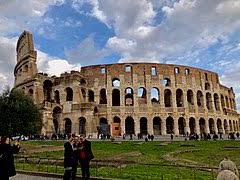Italy: How a forgotten Roman palace near the Colosseum could become the new Torlonia Museum

Rome: An abandoned Renaissance palace near the Colosseum could become the permanent home to one of the world’s most important private collections of Greek-Roman classical sculptures.
The idea was announced by Italy’s culture minister Dario Franceschini during the press conference ahead of the launch of The Torlonia Marbles: Collecting Masterpieces, one of Rome’s most-eagerly awaited exhibitions in decades.

“The state is ready to make available places and resources to create a great Torlonia Museum in the most prestigious locations,” said Franceschini.
One such venue, the minister suggested, is Palazzo Silvestri-Rivaldi. Situated just off Via dei Fori Imperiali, opposite the Roman Forum, the palace is currently undergoing a €40 million restoration financed by the culture ministry.
Designed by Sangallo the Younger, the 16th-century palazzo contains faded mythological frescoes, precious floors and coffered ceilings, hidden by scaffolding, mould and weeds.
The palace has lain in a state of neglect for four decades and in recent years has been surrounded by construction works for Rome’s Metro C subway project.
Prior to becoming abandoned completely, the building was occupied by various movements from 1975 onwards, the same year that the former Torlonia Museum closed its doors definitively on the other side of the Tiber.
This rarely-opened Roman museum, founded a century earlier in 1875, housed the priceless marbles until they went into storage in another Torlonia palace, Villa Albani, in whose basement they were held until the autumn of this year.
Following an agreement reached between the culture ministry and the Torlonia Foundation in 2014, the revered collection now goes on public display at the Capitoline Museums from 14 October.
When the blockbuster exhibition comes to an end, on 29 June 2021, the collection will embark on a world tour for an undisclosed period of time
But just where exactly the marbles will go upon their return to Rome is the million-dollar question.
For now at least we have one potential venue for the future Torlonia Museum, in what could perhaps be a perfect marriage between the legendary collection and the abandoned palace.





